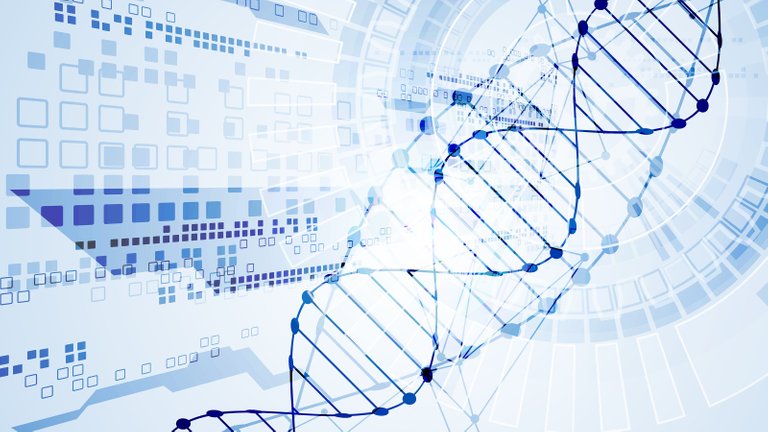
Source
I still remember my professional beginnings in computing more than 3 decades ago, when the Excel spreadsheet could fit on a 360 Kb floppy disk and the most modern hard drives had 10 Mb capacity and you were not able to fill it! . But then Bill Gates invented (more or less) his Windows and there were more and more types of data that could be processed with the consequent increase in the need for storage space.
Aún recuerdo mis inicios profesionales en la informática hace ya mas de 3 décadas, cuando la hoja de cálculo Excel cabía en un floppy disk de 360 Kb y los discos duros más modernos tenían 10 Mb de capacidad ¡¡y no eras capaz de llenarlo!!. Pero luego llegó "Guillermo Puertas" con sus "ventanas" y cada vez eran mas los tipos de datos que se podían procesar con el consiguiente aumento de la necesidad de espacio de almacenamiento.
Today there are several terabytes (10E12 bytes) of data that are uploaded daily to the internet and most of them remain for many years if not forever, it is logical therefore that specialists are concerned about finding a medium and a place safe to store it, preserving their integrity for long periods of time.
A día de hoy son varios terabytes (10E12 bytes) de datos los que se suben diariamente a internet y la mayoría de ellos permanecen durante muchos años si no para siempre, es lógico por tanto que a los especialista les preocupe encontrar un medio y un lugar seguro para almacenarlos conservando su integridad durante largos periodos de tiempo.

Source
That is why now a group of scientists from the Los Alamos National Laboratory have developed a new technology that allows using DNA as a support to save data, its application called Adaptive DNA Storage Codex (ADS Codex) will translate the data received in binary language of 1 and 0 and encode them using the four letters of DNA, ACGT.
Por eso ahora un grupo de científicos de la Laboratorio Nacional de Los Alamos han elaborado una nueva tecnología que permite utilizar el ADN como soporte para guardar datos, su aplicación llamada Adaptive DNA Storage Codex (ADS Codex) traducirá los datos recibidos en lenguaje binario de 1 y 0 y los codificará utilizando las cuatro letras del ADN, A-C-G-T.
According to experts, by 2025 we will have generated 3.3 zetabytes (3.3 x 10E22) bytes of data for which we will need a good number of data centers for storage, using DNA all this information could be stored in a device the size of a meatball or also, for example, store all facebook data in the half of a poppy seed.
Según los expertos para 2025 habremos generado 3,3 zetabytes (3,3 x 10E22) bytes de datos para cuya almacenamiento necesitaremos de una buena cantidad de centros de datos, utilizando ADN se podría almacenar toda esta información en un dispositivo del tamaño de una albóndiga o también, por ejemplo, almacenar todos los datos de facebook en la mitad de una semilla de amapola.

Source
The Adaptive DNA Storage Codex, in addition to converting the 0 and 1 into DNA letters for storage, would also be responsible for converting the ACGT letters back into their corresponding 1 and 0 if any of these data needs to be recovered later, in addition the DNA can stored properly encapsulated for decades at room temperature and much longer with proper refrigeration techniques.
El Adaptive DNA Storage Codex además de convertir los 0 y 1 en letras del ADN para su almacenamiento también se encargaría de volver a convertir las letras A-C-G-T en sus correspondientes 1 y 0 si se necesita recuperar alguno de estos datos con posterioridad, además el ADN puede conservarse debidamente encapsulado durante décadas a temperatura ambiente y mucho más con las técnicas de refrigeración adecuadas.
But as always happens with these things, we will still have to wait to see this technology applied in our daily lives, for example error correction works very well with the binary system but becomes very complex when it comes to correcting errors in data encoded with ACGT letters and read / write times are still very slow but this is only a matter of time..
Pero como siempre pasa con estas cosas aún habrá que esperar para ver esta tecnología aplicada en nuestra vida cotidiana, por ejemplo la corrección de errores funciona muy bien con el sistema binario que se vuelve muy compleja cuando se trata de corregir los errores en datos codificados con las letras A-C-G-T y los tiempos de lectura/escritura aún son muy lentos pero, todo se andará.
More information/Más información
https://www.scientificamerican.com/article/dna-the-ultimate-data-storage-solution/
https://espanol.news/dna-la-solucion-de-almacenamiento-de-datos-definitiva/
Saludos @mauromar, los cementerios terminaran siendo negocios muy rentables.